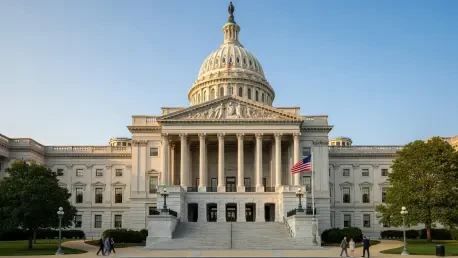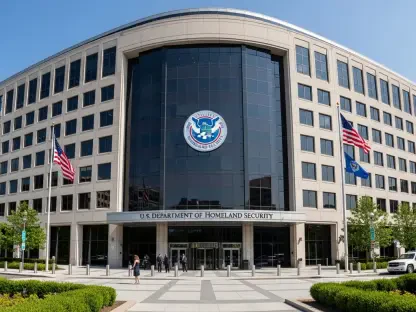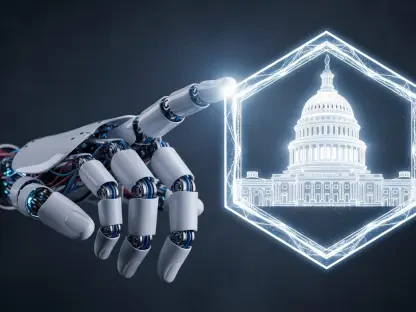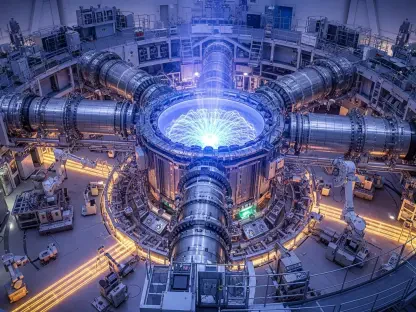What happens when the gears of a nation’s government seize over a budget dispute, leaving nearly a million workers unpaid and critical projects in limbo? As the US Senate remains locked in a bitter standoff, the federal government shutdown stretches into its third day, casting a shadow over the lives of everyday Americans. This crisis isn’t just a headline—it’s a stark reminder of how partisan divides can paralyze progress, forcing the question: can a resolution emerge before the damage becomes irreversible?
The Weight of a Shutdown: Why It Hits Hard
This deadlock carries consequences far beyond the marble halls of Capitol Hill. With 750,000 federal employees furloughed and a daily cost of $400 million in compensation, as reported by the Congressional Budget Office, the shutdown disrupts livelihoods and stalls national momentum. Essential services face delays, from passport processing to food safety inspections, while billions in infrastructure projects grind to a halt. For many, this isn’t politics—it’s the reality of unpaid bills and uncertain futures in an economy still scarred by past challenges.
The significance of this moment lies in its timing and scope. Amid debates over healthcare funding and a national debt that continues to climb, the stakes feel personal to millions. The clash over Affordable Care Act subsidies and Medicaid reforms isn’t abstract policy; it determines whether families can afford insurance or access care. As public frustration mounts, this shutdown tests not just governance but the trust Americans place in their elected leaders to prioritize people over partisanship.
Roots of the Crisis: A Battle Over Healthcare and Power
At the heart of the Senate’s gridlock is a fierce disagreement over healthcare spending, layered with strategic political maneuvers. Democrats demand over $1 trillion to safeguard expiring subsidies and protect Medicaid access, arguing that these measures are vital for vulnerable populations. Republicans, however, push for a “clean” continuing resolution that maintains current funding levels, emphasizing fiscal restraint and alleging widespread fraud in social programs. This fundamental divide has led to four failed Senate votes, with neither side willing to budge.
Tensions escalate as both parties deploy pressure tactics to force a breakthrough. Republicans, with influence from the Trump administration, have halted $18 billion in New York City infrastructure projects and $2.1 billion in Chicago initiatives, framing these suspensions as leverage for fiscal responsibility. Democrats, in response, wield the Senate’s 60-vote threshold to filibuster GOP proposals, stalling any progress. This chess game of politics reveals a deeper struggle—not just over policy, but over who controls the narrative in a deeply divided Congress.
The rhetoric from leadership only fuels the fire. Senate Minority Leader Chuck Schumer has accused Republicans of refusing to negotiate, branding their stance as reckless. Meanwhile, House Speaker Mike Johnson and Senate Majority Leader John Thune counter that Democrats are obstructing a straightforward funding bill for political gain. This blame game, played out in press conferences and soundbites, underscores a gridlock rooted in strategy as much as ideology, leaving little room for compromise.
Human Stories: The Real Cost of Political Inaction
Behind the statistics and speeches are the voices of those bearing the brunt of this shutdown. Federal employees, many working without pay or furloughed indefinitely, face mounting financial strain. Despite a law guaranteeing eventual back pay, the delay means dipping into savings or postponing mortgage payments. One park ranger, speaking anonymously to media outlets, described the anxiety of supporting a family with no immediate income, a sentiment echoed by thousands across the country.
Senators themselves express exasperation at the deadlock’s toll. Senator John Kennedy’s blunt assessment—“bone-deep, down-to-the-marrow stupid”—captures the frustration simmering on Capitol Hill. Moderate voices, like Senator Catherine Cortez Masto and Senator Rand Paul, have hinted at a need for dialogue, though their influence remains overshadowed by rigid party lines. These glimpses of dissent suggest a latent desire for resolution, yet the path forward remains obscured by entrenched positions.
The broader impact ripples through communities. Suspended infrastructure projects in urban centers like New York and Chicago not only delay economic growth but also deepen regional divides, as some view the cuts as politically motivated. Experts caution that prolonged shutdowns erode public confidence in government, a warning that resonates as social media amplifies stories of hardship. These human and systemic costs paint a vivid picture of a crisis that demands urgent attention.
Breaking the Impasse: Searching for Solutions
Amid the standoff, potential pathways to resolution emerge, though each faces significant hurdles. A short-term funding extension, divorced from contentious healthcare debates, could reopen government operations and buy time for separate negotiations. Such a move would require both parties to prioritize immediate relief over long-term agendas, a tall order given the current climate of distrust.
Another approach involves forming a bipartisan working group to tackle healthcare subsidies and Medicaid reforms incrementally, rather than through sweeping, all-or-nothing bills. Historical shutdowns have occasionally ended under similar frameworks, where smaller agreements build momentum for larger compromises. Leveraging dissenting voices within both parties—figures like Independent Senator Angus King or Republican Senator Rand Paul—could help forge a coalition willing to cross party lines for a viable deal.
Public pressure also holds potential to shift the dynamic. Voters reaching out to representatives, as seen in past crises, can amplify the demand for accountability and action. With the shutdown’s daily toll mounting, harnessing this grassroots energy might force Senate leaders to reconsider their hardline stances. While no single strategy guarantees success, these options provide a roadmap for navigating out of the quagmire, if only the political will can be mustered.
A Look Back: Lessons from a Stalemate
Reflecting on this chapter of political paralysis, the deadlock in the Senate stood as a stark illustration of how deeply divided governance could halt a nation’s progress. The clash over healthcare funding, coupled with tactical maneuvers on both sides, left federal workers and critical projects as collateral damage in a battle for ideological supremacy. Each failed vote and pointed accusation deepened the frustration felt from Capitol Hill to small-town America.
Yet, amidst the gridlock, flickers of hope had emerged through calls for compromise and public outcry. The challenge that lingered was clear: finding a balance between principle and pragmatism to prevent such crises in the future. Moving forward, lawmakers needed to prioritize mechanisms—like automatic funding extensions or mandatory bipartisan talks—to avert shutdowns before they spiraled. Beyond policy, rebuilding trust with a weary public demanded transparency and accountability, ensuring that the lessons of this standoff shaped a more resilient system for the years ahead.









